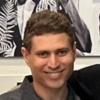Both theories about human cellular aging supported by new research
Research will be presented at America Society for Cell Biology conference
Aging yeast cells accumulate damage over time, but they do so by following a pattern laid down earlier in their life by diet as well as the genes that control metabolism and the dynamics of cell structures such as mitochondria, the power plants of cells.
These research findings, presented at the American Society for Cell Biology (ASCB) 48th Annual Meeting, Dec. 13-17, 2008 in San Francisco, support the theories that old age is the final stage of a developmental program AND the result of a lifelong accumulation of unrepaired cellular and molecular damage.
The diet plus metabolic genes pattern is "a modular longevity network," says Vladimir Titorenko of Concordia University in Montreal, who studies baker's yeast, Saccharomyces cerevisiae, as a simpler model for the complex mechanisms of human cellular aging.
Through the yeast model, Titorenko and colleagues identified five groups of novel anti-aging small molecules that significantly delayed aging.
The scientists first identified a mechanism closely linking life span to the dynamics of such lipids as cholesterol, triglycerides and fatty acids: When fatty acids build up, yeast cells explode from within, scattering their contents and spreading inflammation to neighboring cells.
In addition to cell death, the accumulation of fatty acids sets off chemical reactions that ultimately produce a lipid called diacylglycerol, which impairs many of the yeast's stress response-related defenses.
Knowing the link between life span and lipid dynamics, the scientists next evaluated aging effects of both calorie-rich and low-calorie diets.
The calorie-rich diet suppressed the oxidation of fatty acids in peroxisomes, structures in cells that use enzymes to neutralize toxic peroxides.
These fatty acids are constantly synthesized in the endoplasmic reticulum (ER), the cell's protein manufacturing factory. Without peroxisome processing, fatty acids end up deposited within lipid bodies.
Low-calorie diets, which have been shown to increase lifespan and delay age-related disorders in nonhuman primates and other organisms, altered the way fats were processed in the yeast cells.
The researchers assessed calorie restriction along with a number of known mutations that extend yeast lifespan against a variety of age-related changes in fat metabolism and lipid transport.
To determine whether the diet-aging mechanism could be manipulated by a therapeutic drug, Titorenko and his colleagues developed a life-span assay for a high-throughput screening of multi-compound chemical libraries.
The assay identified five groups of novel anti-aging small molecules that significantly delayed yeast aging by remodeling lipid dynamics in the ER, peroxisomes and lipid bodies or by activating stress response-related processes in mitochondria.
These small molecules can be used as research tools to investigate the mechanisms of longevity, says Titorenko, and as possible pharmaceutical agents for age-related disorders that affect lipid metabolism such as heart disease, chronic inflammation, and Type 2 diabetes.
Source: EurkeaAlert - December 16, 2008













































